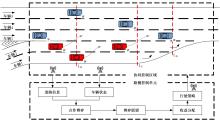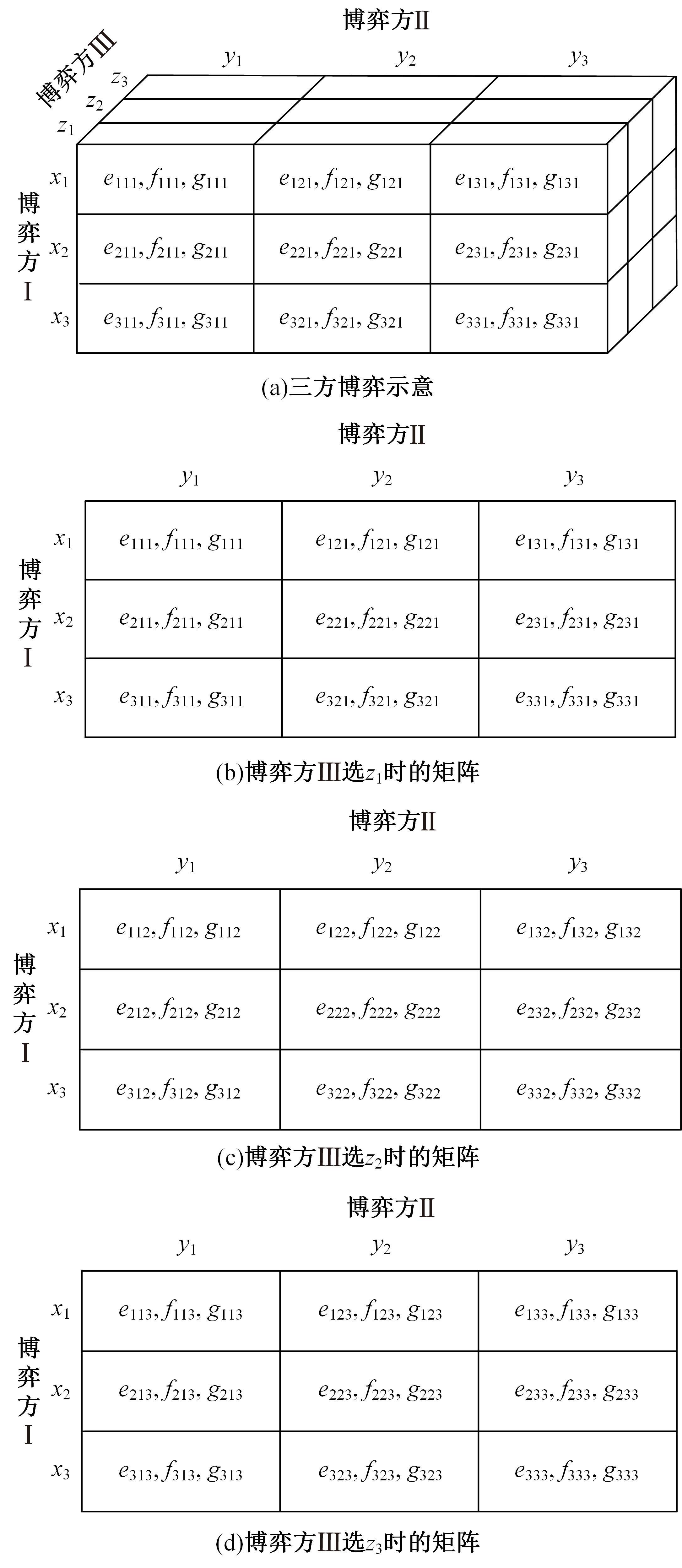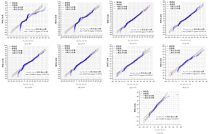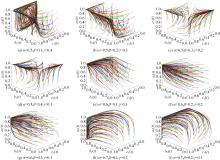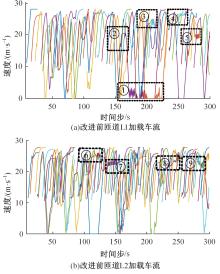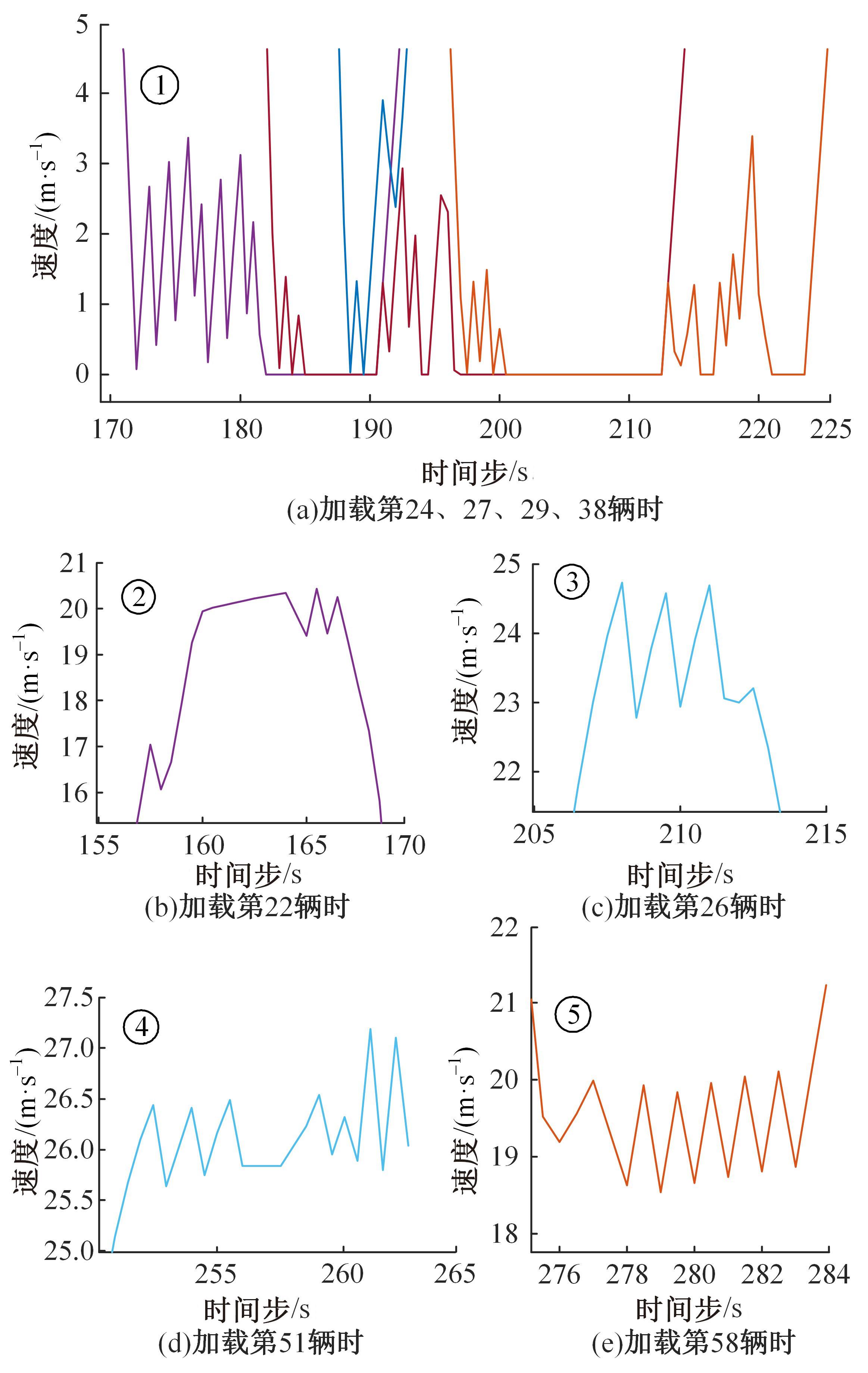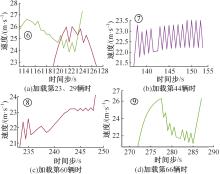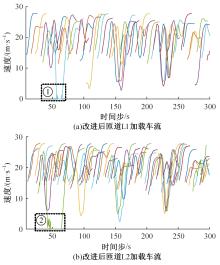吉林大学学报(工学版) ›› 2024, Vol. 54 ›› Issue (5): 1332-1346.doi: 10.13229/j.cnki.jdxbgxb.20220830
• 交通运输工程·土木工程 • 上一篇
匝道合流区智能网联车辆协同控制方法
- 1.重庆交通大学 交通运输学院,重庆 400074
2.宁夏交投高速公路管理有限公司,甘肃 银川 750000
Cooperative control method for intelligent networked vehicles in ramp confluence area
Qing-lu MA1( ),Hao YAN1,Zhen-yu NIE1,Yang-mei LI2
),Hao YAN1,Zhen-yu NIE1,Yang-mei LI2
- 1.School of Traffic and Transportation,Chongqing Jiaotong University,Chongqing 400074,China
2.Ningxia Jiaotou Expressway Management Co. ,Ltd. ,Yinchuan 750000,China
摘要:
为解决智能网联环境下匝道合流过程中车辆通行的效率和安全问题,提出了一种基于博弈论的智能车辆协同控制方法。该方法构建了以匝道外侧车道车辆为主体的三方博弈对局,并从换道、安全和行驶效率收益方面综合建立车辆收益函数;以博弈对局整体收益最大为控制目标,依据夏普利值进行收益分配,得到三方博弈对局中车辆最优控制策略。实验选取重庆市玉马路与重庆内环快速路包头方向合流区为路网原型,对合流区的车辆运行场景采用SUMO/TraCI和Python进行联合仿真分析。结果表明:本文所提出的合作博弈控制方法与演化博弈控制方法相比,总体平均行程时间缩短3.22%,平均延误时间缩短14.47%;车辆严重冲突降低54.04%,碰撞时间小于3 s的比例总体降低了26.56%;有效降低了交通冲突时间,改善了合流区交通运行效率。
中图分类号:
- U491.54
| 1 | 曲大义, 黑凯先, 郭海兵, 等. 车联网环境下车辆换道博弈行为及模型[J]. 吉林大学学报: 工学版, 2022, 219(1): 101-109. |
| Qu Da-yi, Kai-xian Hei, Guo Hai-bing, et al. Game behavior and model of lane-changing on the internet of vehicles environment[J]. Journal of Jilin University (Engineering and Technology Edition), 2022, 219(1): 101-109. | |
| 2 | Rupp A, Stolz M, Horn M. Decentralized cooperative merging using sliding mode control[J]. IFAC-PapersOnLine, 2018, 51(9): 349-354. |
| 3 | Ma K, Wang H. How connected and automated vehicle-exclusive lanes affect on-ramp junctions[J]. Journal of Transportation Engineering Part A Systems, 2020, 147(2). |
| 4 | Zhao Z, Wang Z, Wu G Y, et al. The state-of-the-art of coordinated ramp control with mixed traffic conditions[J]. IEEE, 2019: 1741-1748. |
| 5 | 谢羲, 任璐, 单东辉, 等. 基于ALINEA算法的城市快速路入口匝道优化控制策略[J]. 中外公路, 2021, 41(4): 375-379. |
| Xie Xi, Ren Lu, Shan Dong-hui, et al. Optimal control strategy of on-ramp of urban expressway based on ALINEA algorithm[J]. Journal of China & Foreign Highway, 2021, 41(4): 375-379. | |
| 6 | 戴昇宏,李志斌. 基于图像卷积神经网络的匝道控制深度强化学习算法研究[J]. 交通工程, 2019, 19(4): 1-6. |
| Dai Sheng-hong, Li Zhi-bin. Research on ramp metering based on deep reinforcement learning with image convolutional neural network[J]. Journal of Transportation Engineering, 2019, 19(4): 1-6. | |
| 7 | 江浩斌,胡子牛,刘擎超,等. 智能网联汽车中心式匝道合流协同控制[J]. 湖南大学学报: 自然科学版, 2021, 48(4): 159-170. |
| Jiang Hao-bin, Hu Zi-niu, Liu Qing-chao, et al. Centralized coordinated ramp merging control for intelligent and connected vehicles[J]. Journal of Hunan University(Natural Sciences), 2021, 48(4): 159-170. | |
| 8 | 马庆禄,袁新新,张琳. 交织区多车道协同自适应控制方法[J]. 交通信息与安全, 2020, 38(4): 34-41. |
| Ma Qing-lu, Yuan Xin-xin, Zhang Lin. Multi-lane collaborative adaptive control method for weaving section[J]. Journal of Transport Information and Safety, 2020, 38(4): 34-41. | |
| 9 | 温惠英,吴嘉彬,漆巍巍,等. 高速公路入口匝道合流区的CP-CS融合模型[J]. 华南理工大学学报:自然科学版, 2020, 48(2): 50-57. |
| Wen Hui-ying, Wu Jia-bin, Qi Wei-wei, et al. CP-CS fusion model for on-ramp merging area on the highway[J]. Joumal of South China University of Technology (Natural Science Edition), 2020, 48(2): 50-57. | |
| 10 | 宗芳, 石佩鑫, 王猛, 等. 考虑前后多车的网联自动驾驶车辆混流跟驰模型[J]. 中国公路学报, 2021, 34(7): 105-117. |
| Zong Fang, Shi Pei-xin, Wang Meng,et al. Connected and automated vehicle mixed-traffic car-following model considering states of multiple front and rear vehicles[J]. China Journal of Highway and Transport, 2021, 34(7): 105-117. | |
| 11 | Yang X F, Huang K, Zhang Z H, et al. Eco-driving system for connected automated vehicles: multi-objective trajectory optimization[J]. IEEE Transactions on Intelligent Transportation Systems, 2021, 22(12):7837-7849. |
| 12 | 李巧茹,王少航,陈亮,等. 高速公路合流区可变限速和换道协同控制研究[J]. 重庆交通大学学报:自然科学版, 2022, 41(2): 35-43. |
| Li Qiao-ru, Wang Shao-hang, Chen Liang,et al. Cooperative control of variable speed limit and lane change in expressway confluence area[J]. Journal of Chongqing Jiaotong University(Natural Science), 2022, 41(2): 35-43. | |
| 13 | Salem A H, Damaj I W, Mouftah H T. Vehicle as a computational resource: optimizing quality of experience for connected vehicles in a smart city[J]. Vehicular Communications, 2022, 33: 1-20. |
| 14 | Bouderba S I, Moussa N. Evolutionary dilemma game for conflict resolution at unsignalized traffic intersection[J]. International Journal of Modern Physics C, 2019, 30: 2-3. |
| 15 | Jing S C, Hui F, Zhao X M, et al. Cooperative game approach to optimal merging sequence and on-ramp merging control of connected and automated vehicles[J]. IEEE Transactions on Intelligent Transportation Systems, 2019, 20(11): 4234-4244. |
| 16 | Chen X Y, Li T N, Ma Z A, et al. Integrated mainline and ramp signal control for expressway on-ramp bottleneck with unequal lane-setting[J]. Journal of Intelligent Transportation Systems, 2020(1): 1-16. |
| 17 | 胡益恺, 庄瀚洋, 王春香, 等. 基于主从博弈的智能车汇流场景决策方法[J]. 上海交通大学学报, 2021, 55(8): 1027-1034. |
| Hu Yi-kai, Zhuang Han-yang, Wang Chun-xiang, et al. Stackelberg-game-based intelligent vehicle decision method for merging scenarios[J]. Journal of Shanghai Jiaotong University, 2021, 55(8): 1027-1034. | |
| 18 | 刘畅, 庄伟超, 殷国栋, 等. 高速匝道入口多智能网联车协同合流控制[J]. 东南大学学报: 自然科学版, 2020, 50(5): 965-972. |
| Liu Chang, Zhuang Wei-chao, Yin Guo-dong, et al. Cooperative merging control of multiple connected and automated vehicles on freeway ramp[J]. Journal of Southeast University (Natural Science Edition), 2020, 50(5): 965-972. | |
| 19 | 曲昭伟, 潘昭天, 陈永恒, 等. 考虑博弈的多智能体强化学习分布式信号控制[J]. 交通运输系统工程与信息, 2020, 20(2): 76-82. |
| Qu Zhao-wei, Pan Zhao-tian, Chen Yong-heng, et al. Distributed signal control of multi-agent reinforcement learning based on game[J]. Journal of Transportation Systems Engineering and Information Technology, 2020, 20(2): 76-82. | |
| 20 | 南江霞, 王盼盼, 李登峰. 非合作-合作两型博弈的Shapley值纯策略纳什均衡解求解方法[J]. 中国管理科学, 2021, 29(5): 202-210. |
| Jiang-xia Nan, Wang Pan-pan, Li Deng-feng. A solution method for Shapley based equilibrium strategies of biform games[J]. Chinese Journal of Management Science, 2021, 29(5): 202-210. |
| [1] | 许清津,付锐,郭应时,吴付威. 载货汽车弯道侧翻路侧预测方法[J]. 吉林大学学报(工学版), 2024, 54(5): 1302-1310. |
| [2] | 蒲云,徐银,刘海旭,谭一帆. 考虑多车影响的智能网联车跟驰模型[J]. 吉林大学学报(工学版), 2024, 54(5): 1285-1292. |
| [3] | 胡钊政,孙勋培,张佳楠,黄戈,柳雨婷. 基于时空图模型的车-路-图协同定位方法[J]. 吉林大学学报(工学版), 2024, 54(5): 1246-1257. |
| [4] | 曹倩,李志慧,陶鹏飞,李海涛,马永建. 面向交通事故检测及预防的异质传感器布设方法[J]. 吉林大学学报(工学版), 2024, 54(4): 969-978. |
| [5] | 张鑫,胡启洲,何君,吴啸宇. 考虑交通梗塞的合流区交通状况诊断[J]. 吉林大学学报(工学版), 2024, 54(2): 478-484. |
| [6] | 张卫华,刘嘉茗,解立鹏,丁恒. 网联混合环境快速路交织区自动驾驶车辆换道模型[J]. 吉林大学学报(工学版), 2024, 54(2): 469-477. |
| [7] | 岳昊,张琦悦,杨子玉,任孟杰,张旭. 拥堵空间排队的静态交通流分配迭代加权算法[J]. 吉林大学学报(工学版), 2024, 54(1): 136-145. |
| [8] | 杜筱婧,姚荣涵. 智能网联公交车出站强制换道的演化博弈机制[J]. 吉林大学学报(工学版), 2024, 54(1): 124-135. |
| [9] | 马壮林,崔姗姗,胡大伟,王晋. 限行政策下传统小汽车出行者出行方式选择[J]. 吉林大学学报(工学版), 2023, 53(7): 1981-1993. |
| [10] | 张雅丽,付锐,袁伟,郭应时. 考虑能耗的进出站驾驶风格分类及识别模型[J]. 吉林大学学报(工学版), 2023, 53(7): 2029-2042. |
| [11] | 尹超英,陆颖,邵春福,马健霄,许得杰. 考虑空间自相关的建成环境对通勤方式选择的影响[J]. 吉林大学学报(工学版), 2023, 53(7): 1994-2000. |
| [12] | 潘恒彦,王永岗,李德林,陈俊先,宋杰,杨钰泉. 基于交通冲突的长纵坡路段追尾风险评估及预测[J]. 吉林大学学报(工学版), 2023, 53(5): 1355-1363. |
| [13] | 宋灿灿,荆迪菲,谢俊峰,康可心. 设置广告牌的高速公路平曲线路段驾驶行为分析[J]. 吉林大学学报(工学版), 2023, 53(5): 1345-1354. |
| [14] | 罗瑞发,郝慧君,徐桃让,顾秋凡. 考虑智能网联车队强度的混合交通流基本图模型[J]. 吉林大学学报(工学版), 2023, 53(2): 405-412. |
| [15] | 卢凯,徐广辉,叶志宏,林永杰. 考虑清空时间的双向队首绿波协调控制数解算法[J]. 吉林大学学报(工学版), 2023, 53(2): 421-429. |
|
||
